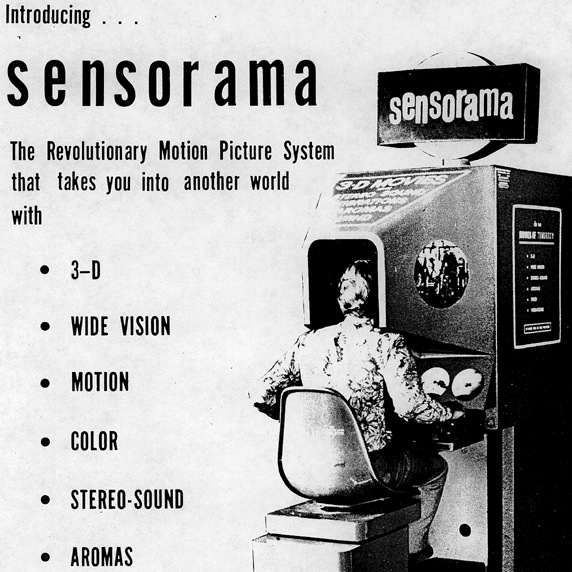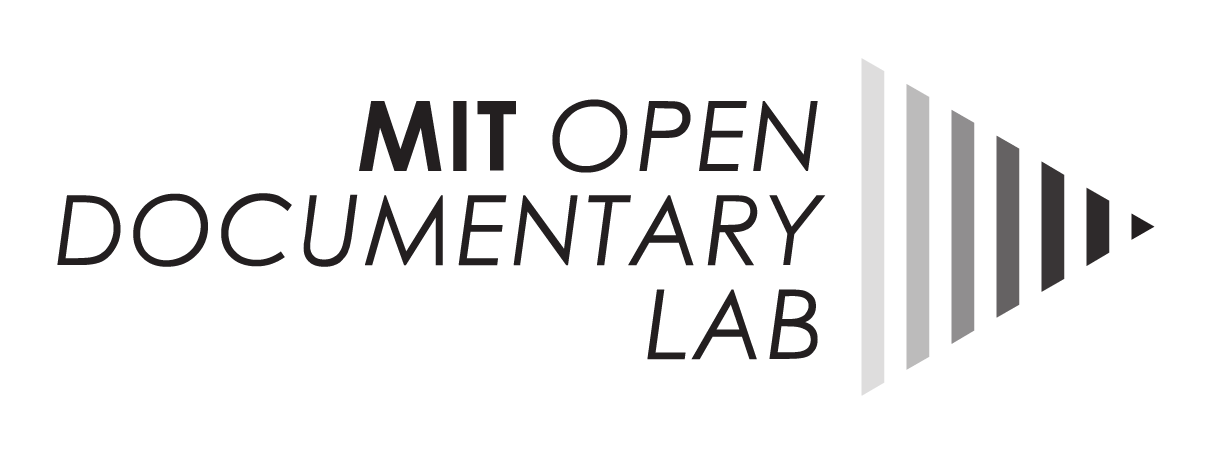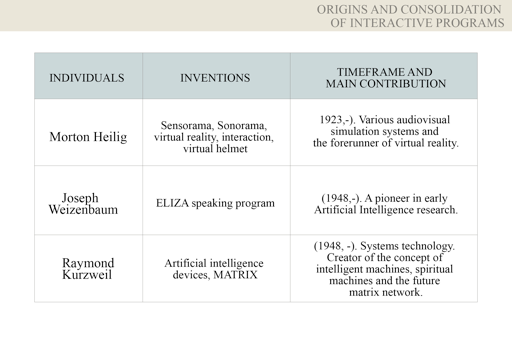
23 May Research Forum | Arnau Gifreu Castells on Documentaries and Digital Media, Part 2
The Open Documentary Lab is pleased to announce the Research Forum, a space for researchers to voice their opinions and test new theories. As part of our mission to promote the exchange of ideas about the new arts of documentary, we hope to encourage academic discussion and debate about these emerging forms by creating a place where researchers can develop ideas and interact with the field. The views presented here belong to their authors, and will necessarily take different forms. In the spirit of the documentaries we study, we look forward to community collaboration and exchange as the ideas explored in the Research Forum take root, grow and support the development of the field.
The OpenDocLab team is happy to welcome Arnau Gifreu Castells, an OpenDocLab visiting research affiliate, as the inaugural contributor to the Research Forum. A Professor of Communication Studies at the Universitat Oberta de Catalunya (UOC) and the Universitat de Vic (UVIC), Arnau is also a member of the i-Docs group. The Director of the UVIC_Lab, the Digital Content Laboratory at UVIC, he has also held research lecturer positions at Harvard University (Harvard Metalab) and York University (Future Cinema Lab).
Combined evolution of the documentary genre and interactive media: towards the interactive documentary
Introduction: the documentary genre and the digital media (II)
by Arnau Gifreu Castells
In this series we focus on analyzing the two main parts that constitute the interactive documentary field: the documentary genre and interactive media. In these articles we trace the evolutions of both the documentary and digital medium, and examine the significant ways they intersect. Our aim is to link moments of innovation in the documentary genre and storytelling in general with technological experiments, inventions and pioneering concepts in the digital field.
The documentary film genre: Historical background
The documentary genre is still undergoing a long process of assessment in terms of its definition (as is the case with the proposals for classification and categorization). According to Bienvenido León (1999:59) in El documental de divulgación científica [The scientific dissemination documentary] (1999), in the history of cinema and television, the term documentary has been used to describe works of various types and characteristics, such as news films, educational films, travel stories and TV shows with various styles and content.
A possible definition of the term documentary is linked to its etymology, the theoretical models it has sustained and analyzed, the evolution of the audiovisual industry and its respective historiography and criticism. As Alejandro Cock points out in Retóricas del cine de no ficción postvérité [Rhetorics of non-fiction post-verité film] (2009), in 1914, Edward S. Curtis was already using the terms documentary material and documentary work when referring to moving images in non-fiction (Plantinga, 1997:27). Some years later, during the 1920s, the French frequently used the term documentaires to describe the films about travel and news that they were producing at that time. The film used the concept of the document to designate films or extracts linked to reality, and it is this status as a document that is the framework for theoretical discussions about the documentary and its emergence as a discourse of reality (Cock, 2009:40).
The so-called “actualités” played a leading role in commercial cinemas from the early projections by the Lumière brothers until the end of the 1910s. At that time, films about everyday life, news stories, exotic places and cultures, were very popular among audiences and were associated with entertainment. This all led to the later appearance of documentary productions and the coining of the term to describe them. However, the apparent stagnation of the audiovisual language and the aesthetic of films based on real events increased the appeal of fictional films, whose success was also driven by the industrialization of filmmaking and based on the successful narrative model of the twentieth century novel, and made rapid progress and became a commercial leader all over the world (Cock, 2009:43).
Given the above, various filmmakers began to offer alternative narratives or suggest different conceptions of film, which became known as documentary, experimental or avant-garde film, depending on the commercial needs at any given time. It was a type of filmmaking that had been on the horizon since the beginning of cinema, but which could not have come about without the prevailing fictional model, against which it positioned itself as an alternative. This laid the foundations for a major evolution in the medium, and major successes at the box office and among critics, for example with the documentary Nanook (Flaherty 1922) and the avant-garde Un Chien Andalou (Buñuel, 1929). However, it led to an artificial division into three genres – fiction, non-fiction and experimental – which have today become forms or modes of representation, with increasingly permeable borders.
John Grierson, a key figure in the British documentary school, is thought to have been the first to use the term ‘documentary’ to describe Moana, a film by Robert Flaherty, in 1926. Grierson pointed out the “documentary value” in the film’s recreation of the daily life of a Polynesian boy (Rabinowitz, 1994:18) . In his article called First principles of documentary, Grierson discussed Flaherty and the way he made documentaries :
1) The documentary must master its material on the spot, and come in intimacy to ordering it. Flaherty digs himself in for a year, or two maybe. He lives with his people till the story is told “out of himself.”
2) It must follow him in his distinction between description and drama. I think we shall find that there are other forms of drama or, more accurately, other forms of film, than the one he chooses; but is important to make the primary distinction between a method which describes only the surface values of a subject, and the method which more explosively reveals the reality of it. You photograph the natural life, but you also, by your juxtaposition of detail, create an interpretation of it.
Flaherty himself says of the ethics and the duty of a documentary filmmaker:
The purpose of the documentary, as I understand it, is to represent life in a way in which it is lived. This by no means implies what some people might think; namely, that the task of the documentary’s director is to film, without making any selection […] The task of selection is performed on the documentary material, with the aim of telling the truth in the most appropriate way (Romaguera and Alsina, 1989:152).
John Grierson (1966:40) says that all works using materials from reality are generally categorized as documentaries, but unlike Paul Rotha, he suggests that the category should be set aside for works that include a significant artistic contribution. Grierson considers the documentary to be creative treatment of reality and believes that it is wise to establish formal limits of the different “species” of documentary.
Consolidation of the interactive program. Hypermedia, multimedia and the case of the Internet: Origins and consolidation of interactive programs
In the nineteenth century, new visual reproduction technologies paved the way for subtle means of integration of direct participation of the viewer as an individual. Running the gamut from the praxinoscope, to communication technologies like the telegraph and telephone, these nineteenth century inventions reconstructed the social definitions of the private versus the public sphere. They also anticipated interactivity-based technologies similar to those of the present day, such as the Internet, virtual reality and digital TV on demand.
The fact that collective viewing influenced many of the inventions of the nineteenth century, as also occurred during the twentieth century, is due simply to commercial factors – particularly the desire for greater profits from screenings with collective rather than individual audiences. This can be seen in Thomas Edison’s commercial marginalization of the French Kinetoscope in 1894 (a peep show that could only be viewed by one person), in favor of the Lumière brothers cinématographe, which could be viewed by many people simultaneously. Another example is the lack of support Hollywood gave Morton Heilig’s Sensorama in 1962, since at the time it was more concerned with new research on how to expand the screen (Cinemascope, 3-D, etc.) in order to recover the audience that it had lost due to the mass introduction of television.
As Xavier Berenguer (1997) points out, the seminal visions of interactive programs and their scope came from two individuals: first, Vannevar Bush, who in the 1940s, when computers were only used to calculate the trajectories of bullets and bombs, imagined a digital system called the “Memex” for storing large interconnected knowledge bases, which could be accessed from various and multiple levels; second, Ivan Sutherland in the 1960s, who invented the digitization of images and designed goggles for wandering around within the images. According to Berenguer, “Bush’s ideas are the basis for modern systems of information exchange, closer to people’s natural way of relating information, while Sutherland is the father of the technology which allows putting these ideas into practice and the first to discover the horizons of interactive communication” (Berenguer, 1997).
Another important figure is Ted Nelson, who coined the term “hypertext” in 1965. Nelson also devised another utopian database, called “Xanadu.” Despite the fact that “Xanadu” never existed, Nelson’s simultaneous reflections on methodological and linguistic order are essential to the development of interactive programs.
The serious and definitive approach to technically feasible interactivity came about with the technologies invented by Douglas Engelbart (the mouse, windows, etc.) and by Alan Kay (the first graphic interfaces), in the early seventies.
In the audiovisual field, the direct forerunner of the interactive program is interactive video. The impetus for the transition from interactive video to interactive multimedia was provided by the compression and transmission of images, in order to reduce the volume of information contained in moving images, and to increase the speed of transfer of information between devices. As Berenguer said in “Writing Interactive Programs” (1997), “in the digital conversion process, text, images and sounds are all converted into bits of information, meaning that in the end there is just one medium and interactive programs are “unimedia””(Berenguer, 1997).
The Englishman Alan Turing can be considered the father of artificial intelligence, although this term was not used until after 1956. After that, various individuals made a name as pioneers of this concept, with the most important figures being Morton Heilig, Joseph Weizenbaum and Raymond Kurzweil. A table below summarizes the contributions of these authors and the origins of interactive programs (and we should also remember that they became the forerunners of artificial intelligence).
References
BERENGUER, Xavier (1997), “Escriure programes interactius”. Barcelona: Formats, 1.Universitat Pompeu Fabra. Versió en línia disponible a: http://www.iua.upf.es/formats/formats1/a01ct.htm
BUÑUEL, Luis (1929), Un Chien Andalou.
COCK , Alejandro (2009), Retóricas del cine de ficción postvérité. Ampliación de las fronteras discursivas audiovisuales para un espíritu de época complejo. [Tesi doctoral] Bellaterra: Universitat Autònoma de Barcelona.
FLAHERTY, Robert (1922), Nanook of the North.
GRIERSON, John; HARDY, Forsyth (1966), Grierson on documentary. London: Forsyth Hardy Faber.
GRIERSON, John (1998), Postulados del documental. Madrid: Cátedra.
LEÓN, Bienvenido (1999), El documental de divulgación científica. Barcelona: Paidós.
PLANTINGA, Carl (1997), Rhetoric and representation in nonfiction film, Cambridge: Cambridge University Press.
RABINOWITZ, Paula (1994), They Must Be Represented: The Politics of Documentary. London/New York: Verso.
ROMAGUERA, Joaquim; ALSINA, Homero (1989), Textos y manifiestos del cine, Madrid: Cátedra.




